Is the RX3 Adventure the dual-sport ADV motorcycle the other manufacturers should be building?
By Randy Reek
I recently purchased my ninth motorcycle. My requirements were a lightweight, simple, and versatile motorcycle for dual-sport riding. The term “dual-sport” means different things to many people. For me, a dual-sport motorcycle is one that you can ride from your home, down the highway to the start of an unpaved road section, travel for the day or several days, and then ride back home. To me, a dual-sport motorcycle is not a road cruiser, not a street sport bike, and not a motocross bike. It is a compromise that you can ride almost anywhere. This versatility also means that it is not the best bike on any surface. After much deliberation, I chose the RX3 Adventure imported by CSC Motorcycles from Zongshen in China.
Why the CSC RX3 Adventure?
When I first decided to become a dual-sport motorcycle rider, I had already owned dirt bikes and heavy V-twin cruisers. I watched videos and read articles and researched available accessories. My first (incorrect) conclusion was that an “adventure bike” needed to be a “world crosser” – that is, a motorcycle capable of traveling highways and dirt roads anywhere in the world. Based on this incorrect conclusion, my first “adventure” bike was a Suzuki DL650 Vee-Strom Adventurer.
After more research and hours of modifications, my first adventure was a week-long ride on the eastern half of the Trans-America Trail.
I rode about 750 miles by highway from my home in Arkansas to the start of the official Trans-America Trail in Tennessee. Then I rode the combined paved and unpaved sections of the TAT trail back to my home in Arkansas. The round trip was 1,795 miles and I was hooked! But I was also convinced that the super-smooth 650-twin Suzuki was just too low and too heavy for the western sections of the TAT.
Based on my plans to ride the western mountainous “TAT” sections the following summer, I decided what I really needed was a bike with more off-road capabilities, so I went to the other end of the spectrum and bought a Yamaha WR250R. Then followed the long – and expensive – process of outfitting the Yamaha for long-range travel. I replaced the turn signals, foot pegs, added a wind screen, added a rear rack and pannier racks and soft bags.
Before I would ride the western TAT, I made plans to ride the Arizona Backcountry Discovery Route, or AZBDR. The picture below is me and the Yamaha WR250R leaving on the solo journey from Sierra Vista, AZ on my way to the Mexican border in April 2014.
In late June, I rode from Arkansas on the TAT. With my fellow ADV rider, we rode to Utah, and then turned back north and east on the Colorado Backcountry Discovery Route to where family was waiting in Denver.
The Yamaha ran perfectly. I was able to squeeze in everything I needed for 10 days of riding and camping. But it was an ordeal to ride almost 2,000 miles on a tall, stiff bike with a seat like a 2 x 6! And there were a few times I fell over on the top-heavy bike on tough sections of the mountain trails, which didn’t inspire confidence when it came time to traverse the switchbacks with sheer 1,000-foot cliffs.
The end of one ride starts the planning for the NEXT adventure – Utah and the UTBDR in 2015! By now I had decided that neither the Vee-Strom or the WR250R met my definition of a true, all-purpose adventure bike. So, I sold them BOTH! Thus began my next ADV bike build: A Triumph Tiger 800XC.
The bike build process started all over again. I added a tall windshield, transferred the aluminum panniers from the Suzuki, added a rear rack, added a skid plate and countless other “farkles”. Then I took off on an October road trip to the Overland Expo in North Carolina, with side trips to the Blue Ridge Parkway and the Tail of the Dragon before heading down into Florida. It was a successful camping shakedown for the UTBDR in 2015.
The Utah Backcountry Discovery Route includes some of the best scenery and varied roads available to dual-sport riders! Our group of riders started near Moab and spent two days in this area before heading north. The riding in Utah must be experienced. Photos cannot capture the scope of the landscape:
We made a loop around Utah, and then continued to Monument Valley, finishing in Sedona, AZ for a total of 1,500 miles. I learned first-hand the limitations of large adventure bikes in the back country. An inch of Utah mud can stop you indefinitely (and break off a $250 front fender!) Not only do failures cost money in repairs but can be dangerous if you get stranded for hours or days in the back country. I became disillusioned with the Triumph (which was also high-maintenance) and began to plan what my next bike would be.
After many miles and great expense, I concluded that there is NO perfect ADV bike. There is NO bike that excels in all conditions. You try to meet the most important requirements and live with the shortcomings in other areas.
You can choose a large bike like my Tiger or a GS BMW for comfort on the highway and then struggle in the rough stuff. You also cry every time the expensive bile gets dumped in the mud, rocks, or sand. You also never ride alone because you can’t pick-up the heavy beast. Or you can choose a street-legal dirt bike like the WR250R for better off-road performance and punish yourself over long distances. Or you can admit defeat and buy more than one bike for multiple situations!!!
With this mindset that I started to plan for my next adventure: a road trip to Alaska! I studied the maps and planned my route. The trip would include over 6,000 miles of highway riding and over 1,000 miles of unpaved roads. NONE of the unpaved miles would be technically difficult “off-road” trails. All this data was factored to select the replacement for the Triumph Tiger.
I needed a bike with great comfort for long days of 500 miles or more on the highway. I needed supreme dependability and the best possible fuel economy. I needed enough power to keep up with traffic on freeways while hauling my camping gear. But I also wanted the lightest possible bike that combined all these features and was still capable of wearing knobby tires for the 1,000 miles of unpaved roads. (I also wanted tubeless tires for ease of flat repairs on and off road versus the tube tires on the Triumph.) My choice was unconventional: The Honda NC700XD.
My Alaska adventure was a complete success! Over 7,200 miles including over 1,000 miles on unpaved roads (after swapping the stock tires for knobbies in Fairbanks) to Coldfoot, Manley Hot Springs, McCarthy, Chicken, Eagle, and Dawson City! I AVERAGED 480 miles per day and the Honda NC700XD proved to be perfectly reliable, comfortable and capable of cruising sand and gravel roads.
Immediately after returning home, our house sold and we prepared to move to Arizona. I was convinced that the low, heavy Honda street bike was not going to be the right ADV bike for off road exploring. I NEEDED a second, lighter motorcycle.
And this brings us to the CSC RX3 Adventure
By this time, I had been watching the RX3 for over two years. Remember that I had completed over 2,000 miles of adventure riding on my Yamaha WR250R across Arizona, and from Arkansas to Utah and Colorado. To prepare for these rides, I had invested over $2,000 in modifications and upgrades to the Yamaha – which was already the most expensive motorcycle in the 250cc dual-sport class. Even after these modifications, the Yamaha was still too tall and too uncomfortable for serious adventure travel.
Based on my experience, I already knew that a 250cc motorcycle was perfect for adventure riding. There is no problem maintaining highway speeds on a 250 – which may come as a shock to the owners of 1,000 and 1,200cc motorcycles. In fact, a 250cc motorcycle is considered HUGE in most of the world where 100 or 125cc motorcycles are the norm!
The best characteristics of 250cc single motorcycles is their light weight, simplicity and dependability. Was the RX3 Adventure dependable? I watched the reviews for two years and did my research. Yes, this motorcycle built by Zongshen is proven not only in the American market but around the world. See also the CSC article: Proven Reliability of the RX3 Adventure. In addition, CSC stands behind the RX3 with a 2-year parts and 1-year labor warranty!
The RX3 Adventure, as specified and marketed by CSC Motorcycles in North America, is an unmatched package of components and accessories. The standard RX3 includes the base features that had previously sold me on the Yamaha WR250R including fuel-injection, 6-speed transmission and liquid cooling. I consider these three features to be non-negotiable for a modern adventure bike. These three requirements eliminate other traditional choices like the Honda XR650L, Suzuki DR650 and DRZ400S, Yamaha XT250 and the Kawasaki KLR650 – even though there are thousands of satisfied riders around the world for each.
I also eliminated from consideration the Honda CRF250L for the same reason as the Yamaha WR250R. The standard RX3 includes all the features that I added – at great expense – to my Yamaha WR250R and would also need to add to the Honda CRF250L:
- Rear rack and top case
- Side racks and panniers
- Windshield
- LED turn signals and tail light
- Crash bars
- 2-gallon fuel tank. This last feature alone was probably the deciding factor. It costs hundreds of dollars to outfit other bikes with a gas tank capable of a 200-mile range. Why do manufacturers supply “dual-sport” bikes with 2-gallon gas tanks? This is just inexcusable for any motorcycle intended for anything more than short trips to the mall!
On top of this, the CSC RX3 Adventure includes features not available at any price on many of the competitive models:
- Digital speedometer and analog tachometer.
- Gear indicator
- Odometer, trip odometer and clock
- Adjustable front and rear suspension
- Accessory wiring harness pre-wired to switches on the handlebars
In conclusion, the RX3 is an adventure-ready package that costs HALF of what it costs to assemble a comparable motorcycle from any other manufacturer. I know – I have done it several times!
The RX3 Adventure has the features and options that fit the type of riding I do: (Your tastes may be different?)
- Lower seat height, even after the upgraded “tall” seat from Seat Concepts. Plus, this seat is actually soft and wide!
- 19-inch front wheel is standard for 2018 (this was an extra-cost option in 2016)
- Available aluminum skid plate
- LED headlight option
- Optional 12-volt accessory and USB outlets on the dash.
- Optional billet aluminum headlight guard, and guards for other components.
- Dozens of other parts and accessories available from CSC.
Make no mistake! The CSC RX3 Adventure is NOT a motocross bike. It is NOT the bike for you if ALL you want to do is ride single-track, pop wheelies, and jump logs. CSC offers the TT250 Enduro dual-sport bike for more punishment off road. The RX3 is not the best possible road bike for averaging 500-miles per day on a trip to Alaska and back (although it would be perfect for a more mellow pace of 300 miles per day.) If I wanted to ride LONG highway miles I would opt for the new 2019 CSC RX4 with the gnarly 450cc single!!!
But – the RX3 Adventure is the perfect economical and comfortable bike if you want to ride the highway and the dirt roads. It is perfect if your dual-sport riding includes gravel roads that do not require low range and differential locks in a Jeep! (Especially if you chose the optional knobby tires, 13-tooth front drive sprocket and skid plate like I did.) Plus, the RX3 side racks and panniers can be removed for trail riding or to add soft panniers. Of course, the RX3 will commute to work or school and take road trips without sacrificing comfort or performance like a REAL dual-sport!
The CSC RX3 Adventure does everything I require of a dual-sport motorcycle. I now have a lighter and dependable bike that handles the twisty highways and turns readily onto the dirt roads. It’s not too heavy to pick-up, yet it’s not too light that it gets blown around by oncoming semi’s. It’s inexpensive to purchase and insure. I average about 65 miles per gallon on regular – NOT premium gas. I can load it up for multi-day rides when needed. I can maintain and fix most everything myself on the simple thumper. Parts are free for the first two years under the warranty if needed, and then cheap to buy after that. You can use the RX3 as the base bike to customize for any type of riding. And when the RX3 gets dirty or gets dropped I don’t cry over thousands lost in resale value. After all, I can buy FIVE RX3 Adventures for the price of most “ADV bikes” and have just as much fun – maybe more fun and less stress and exertion!
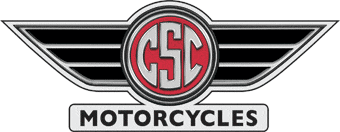
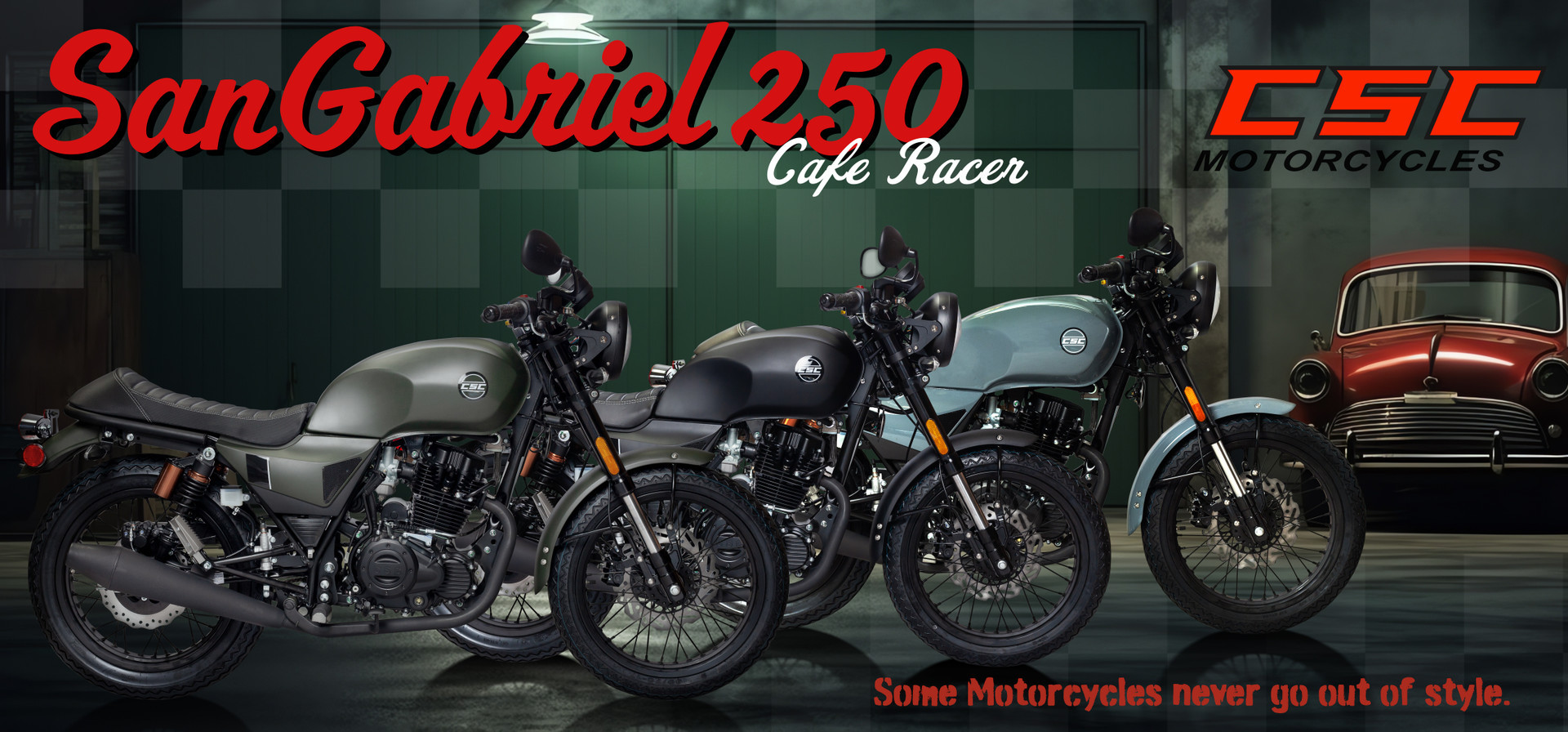
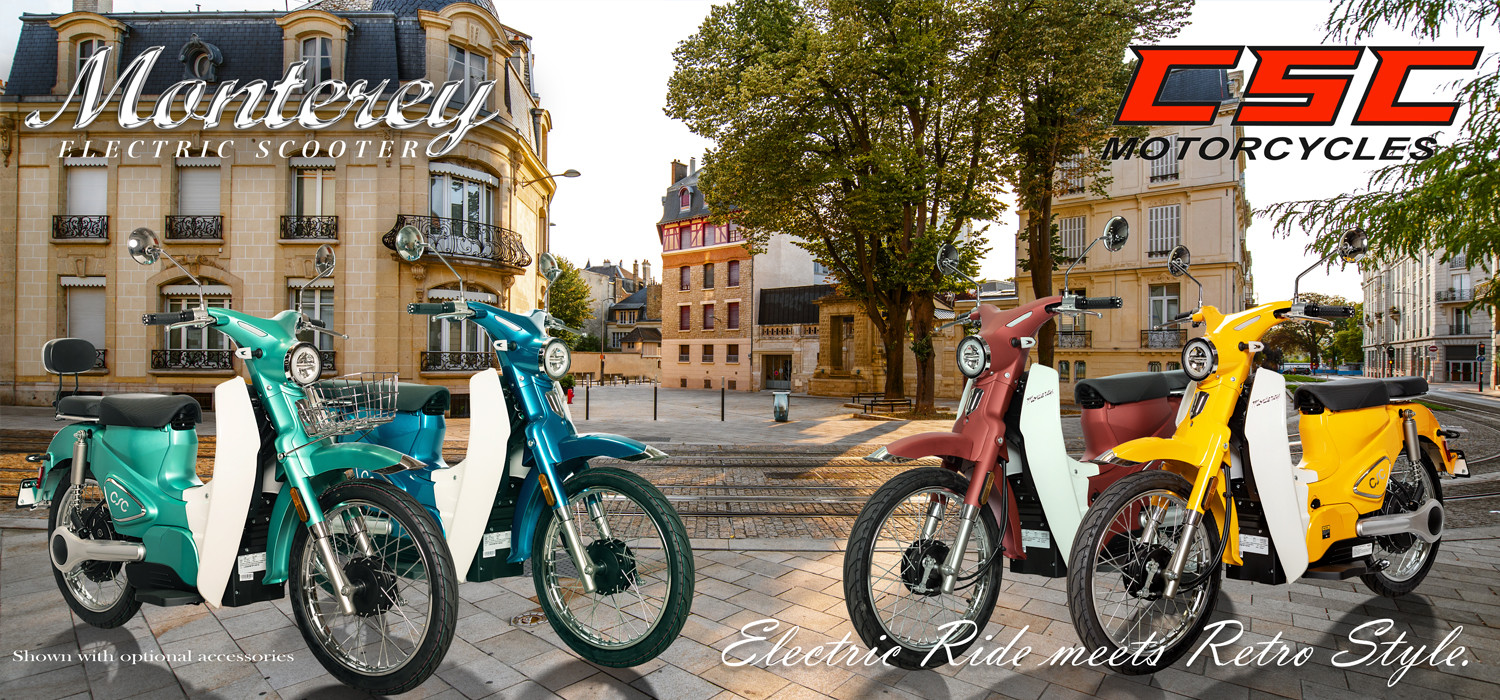
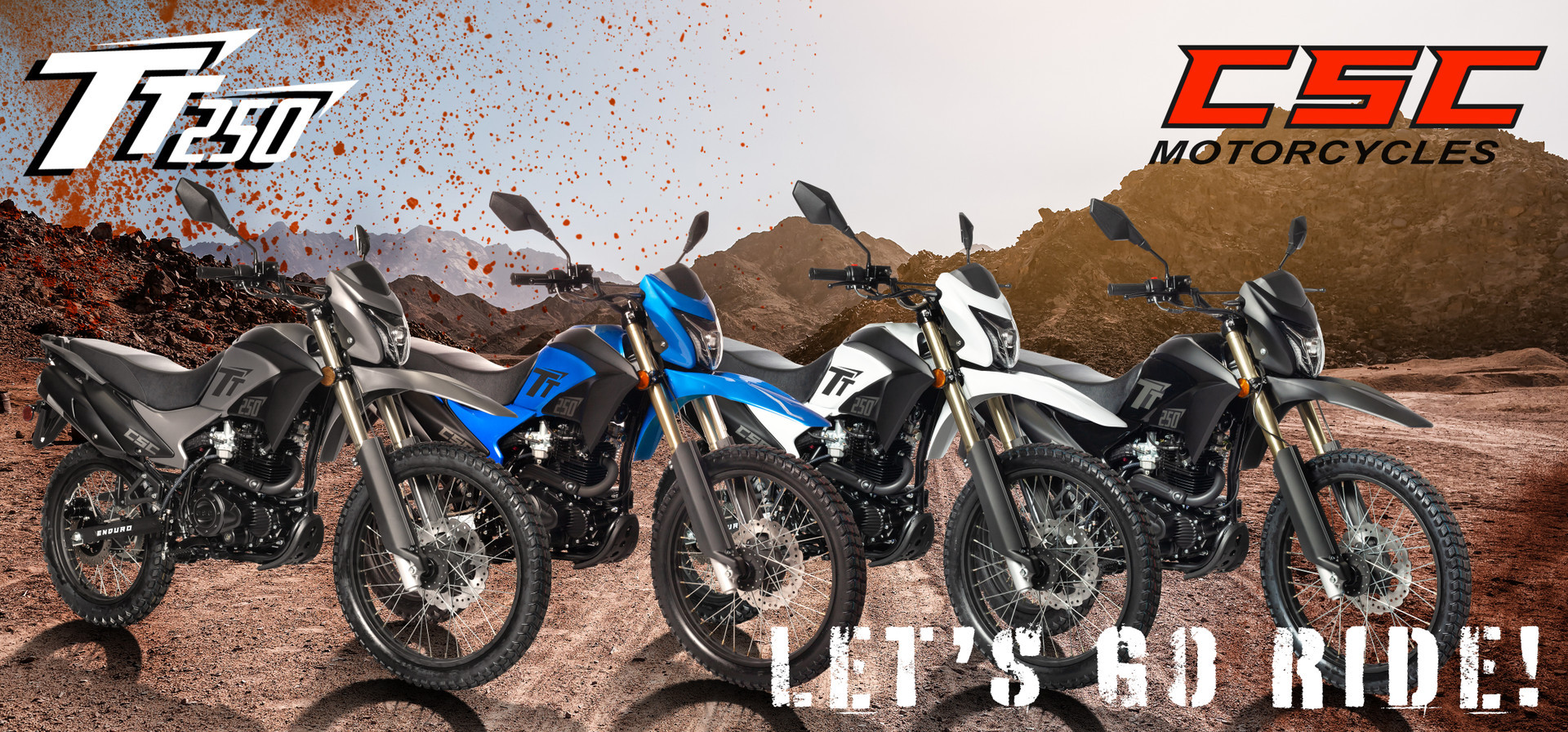
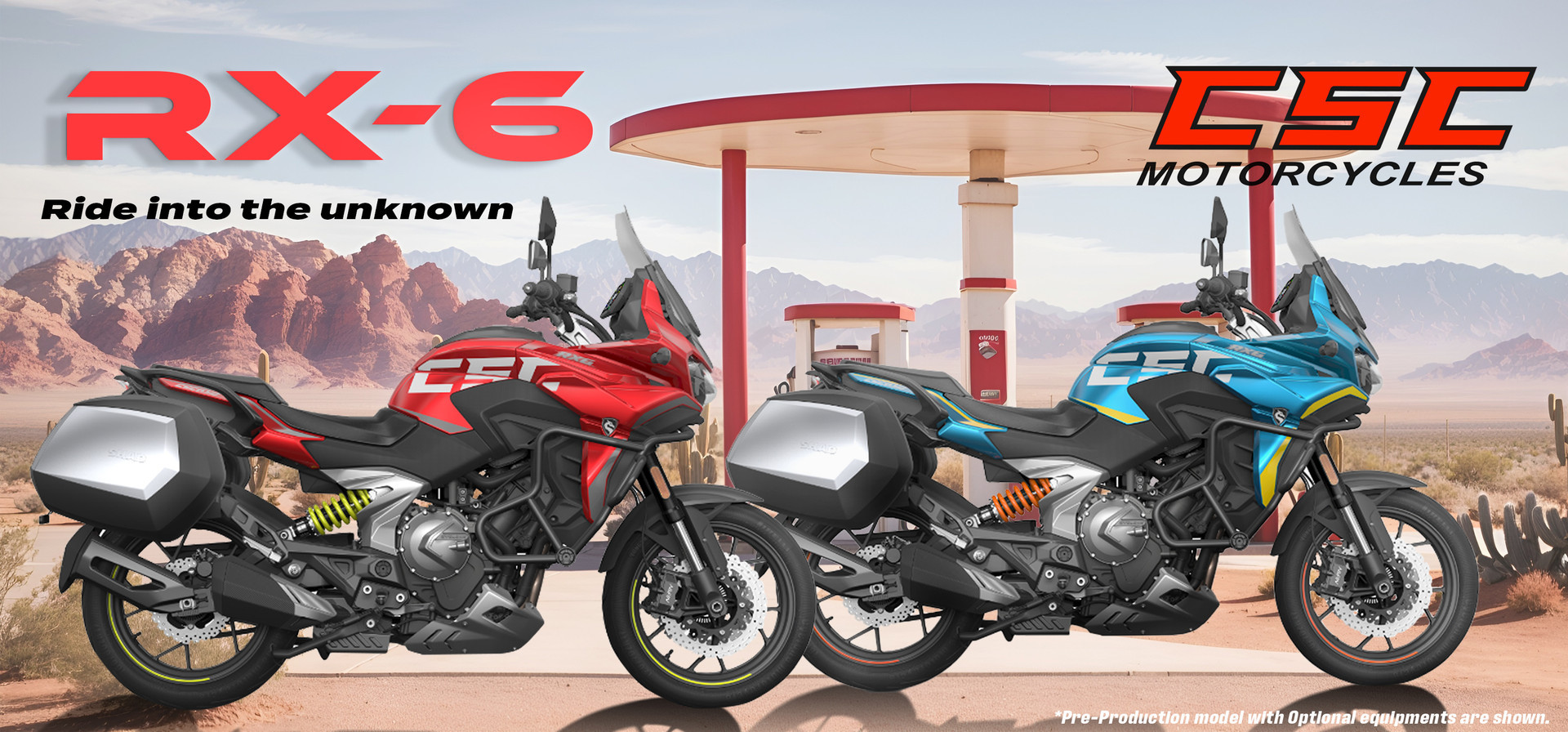
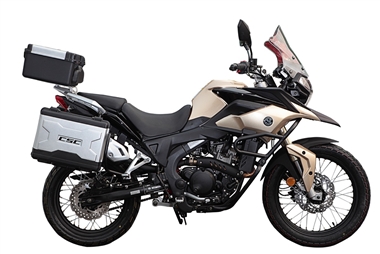
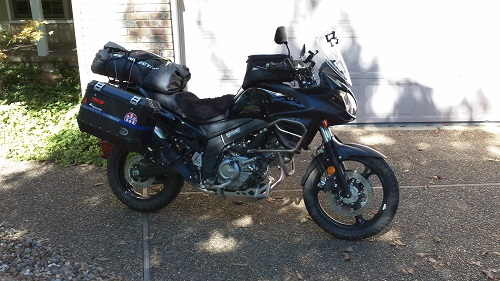
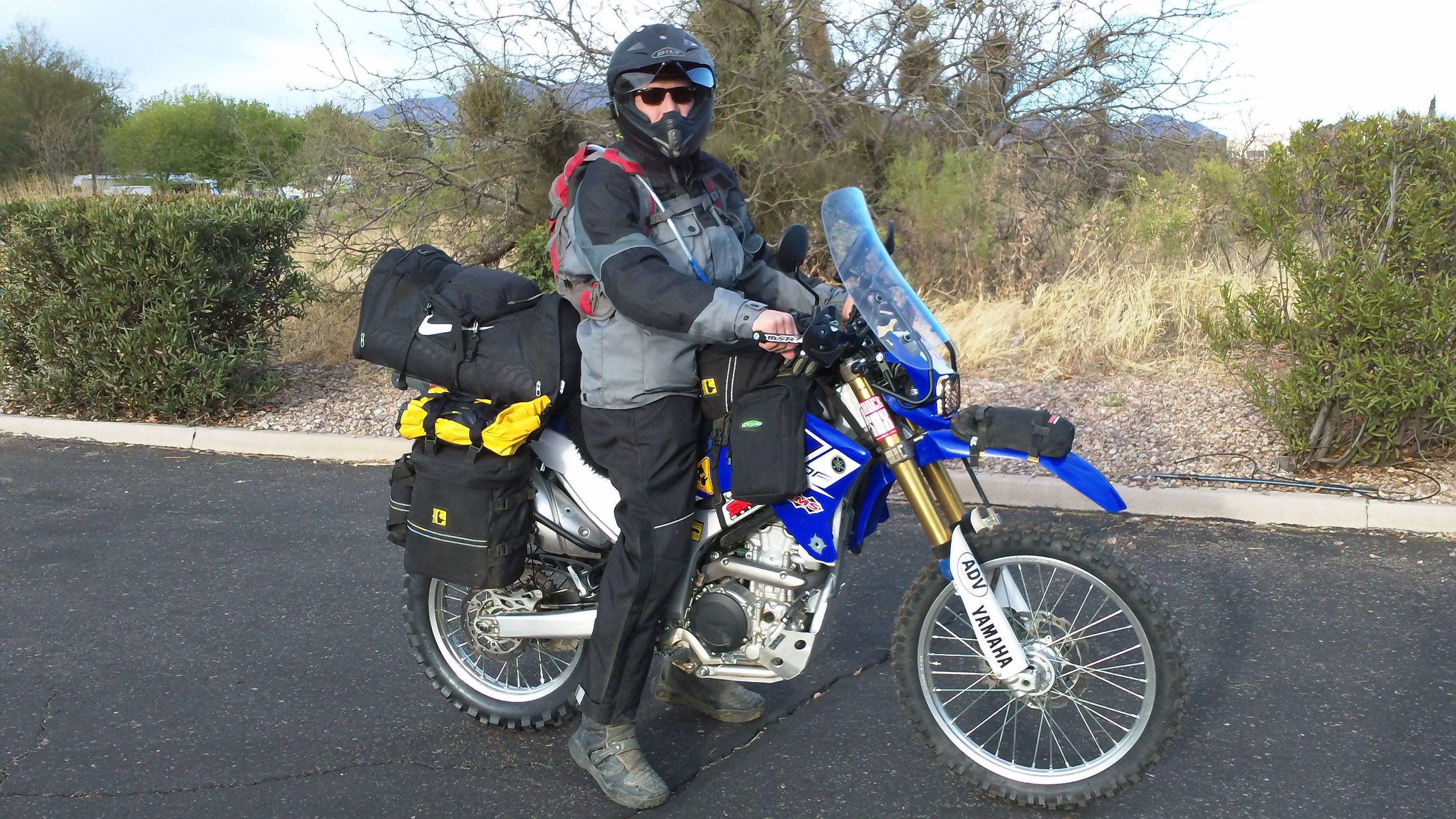

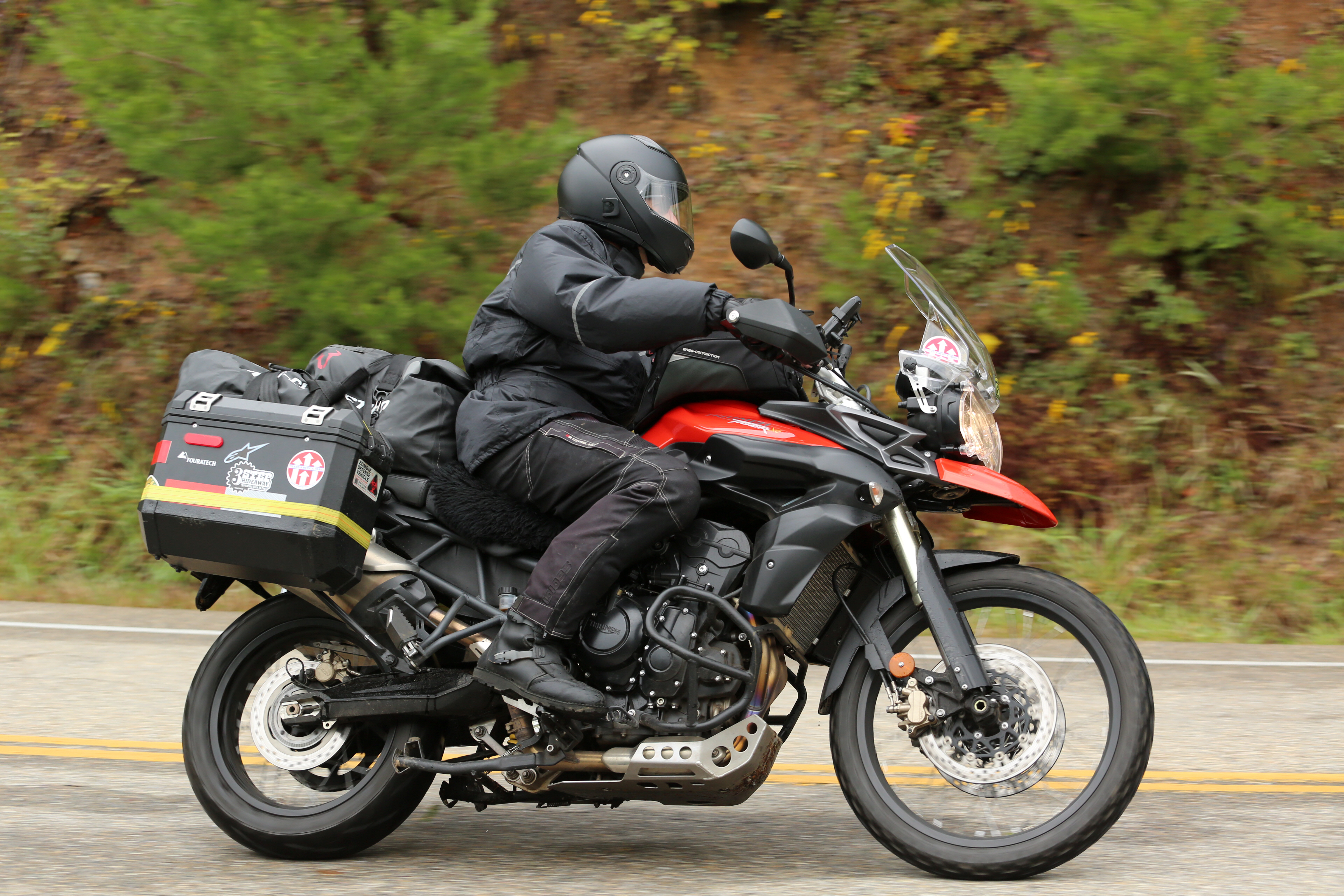

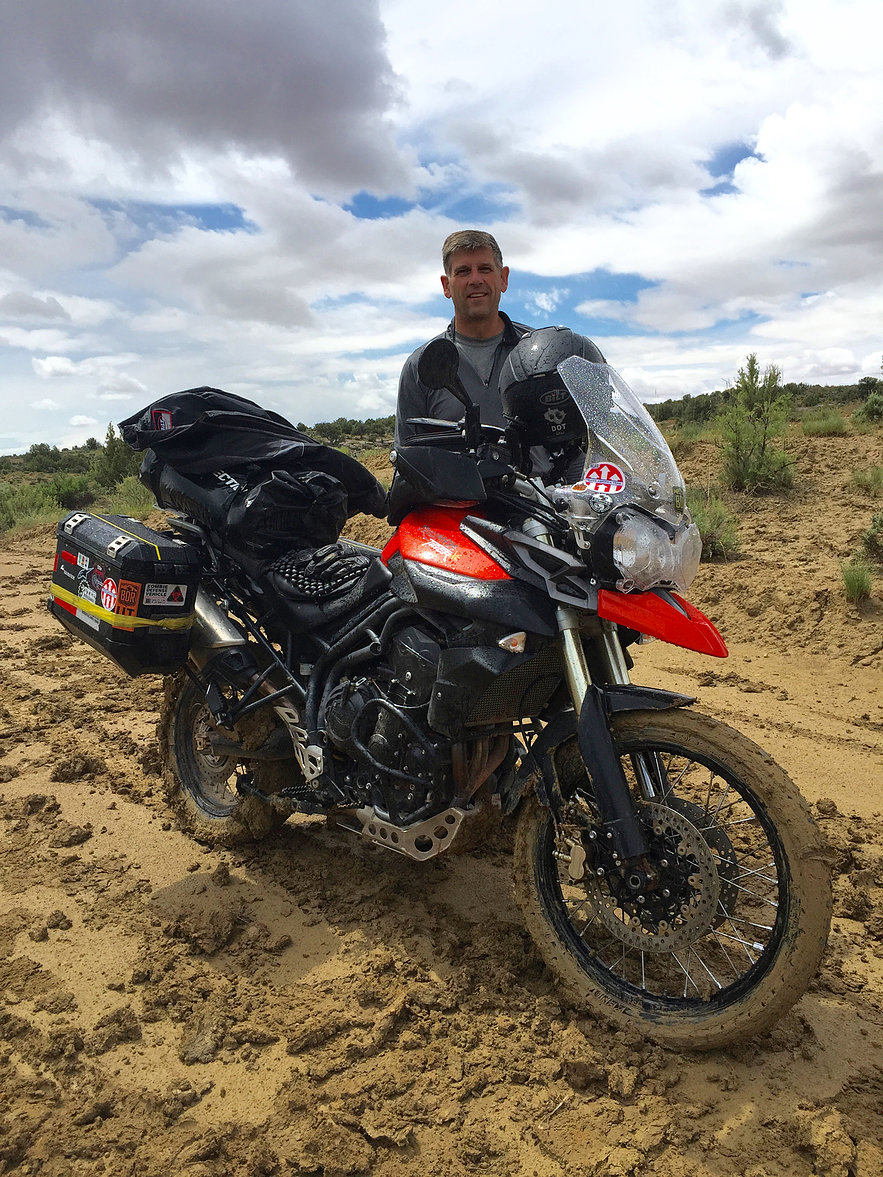

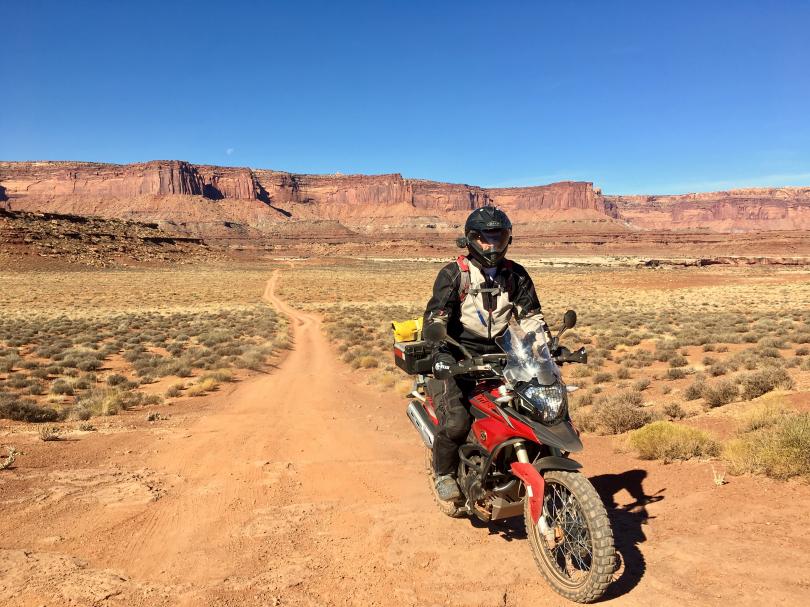
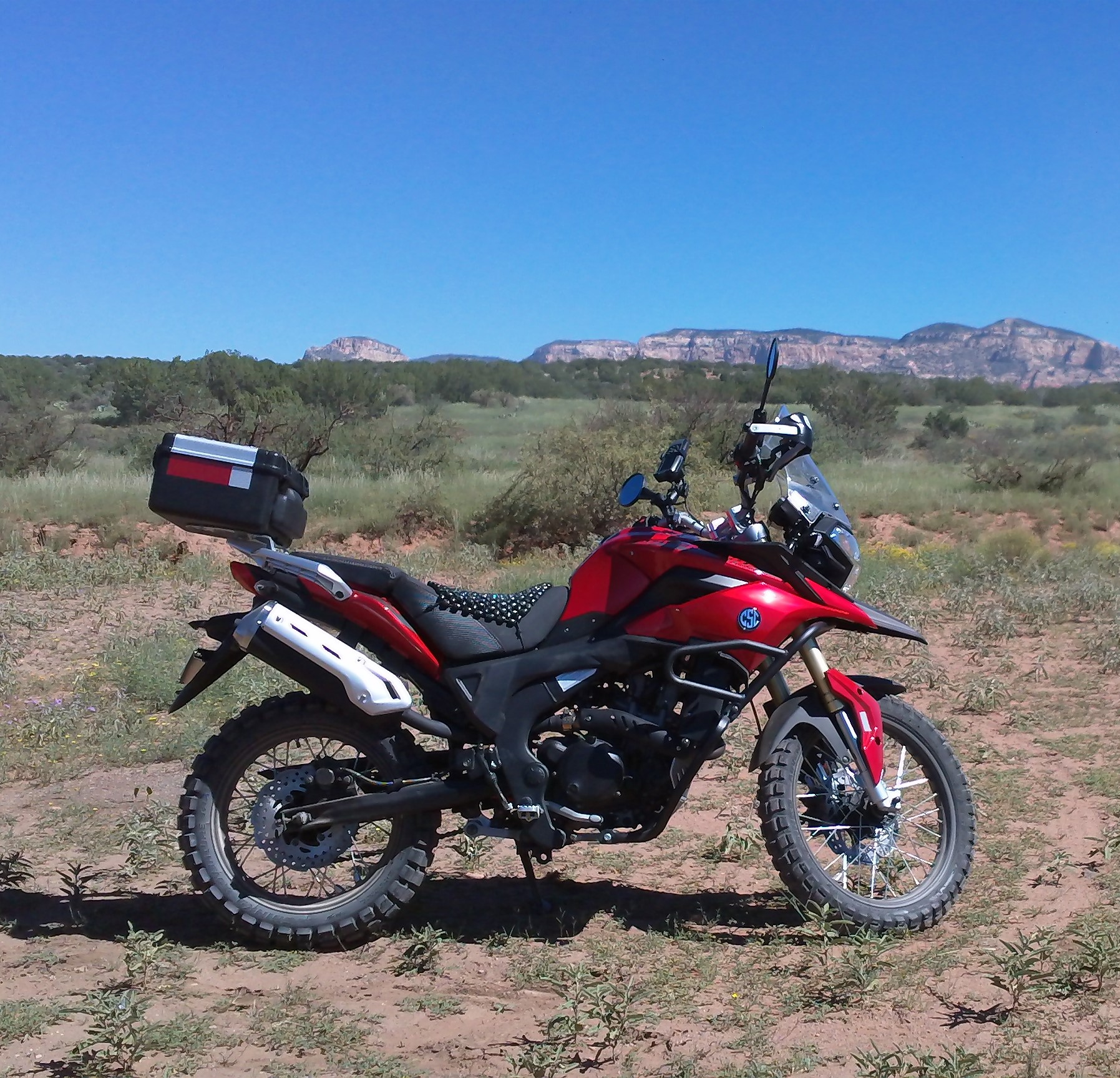

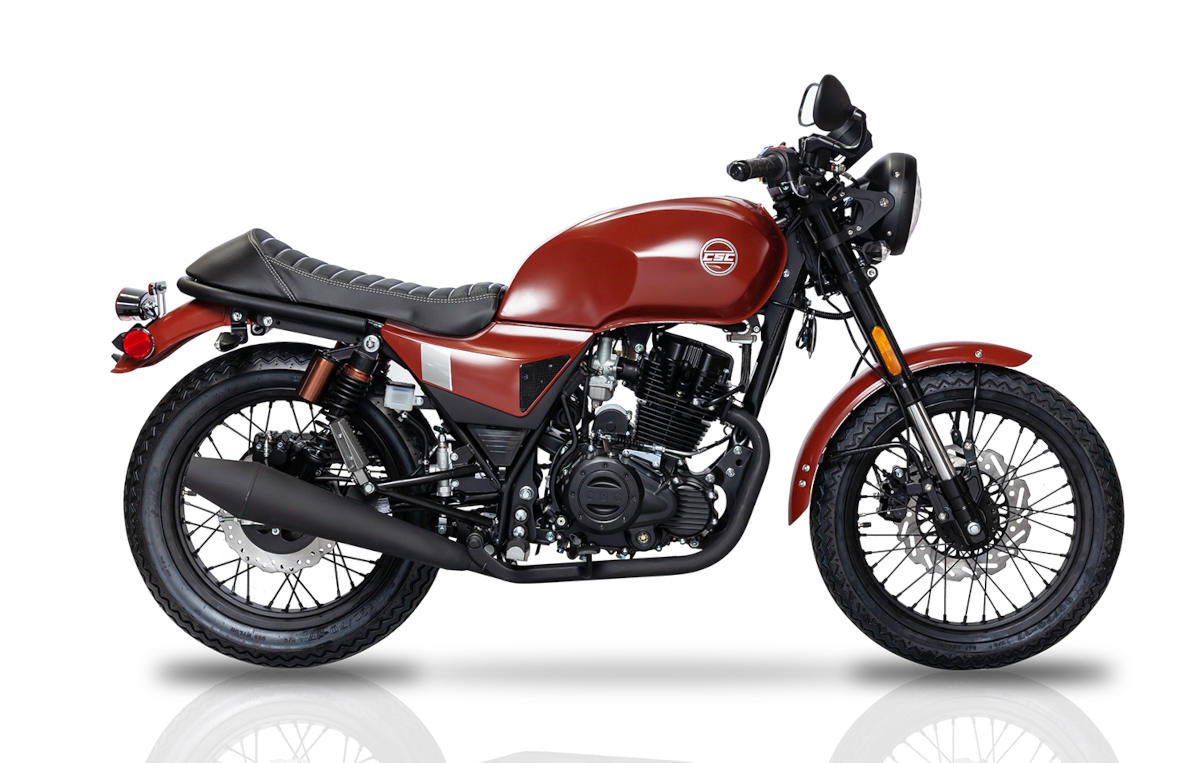 SG250 San Gabriel Cafe Racer
SG250 San Gabriel Cafe Racer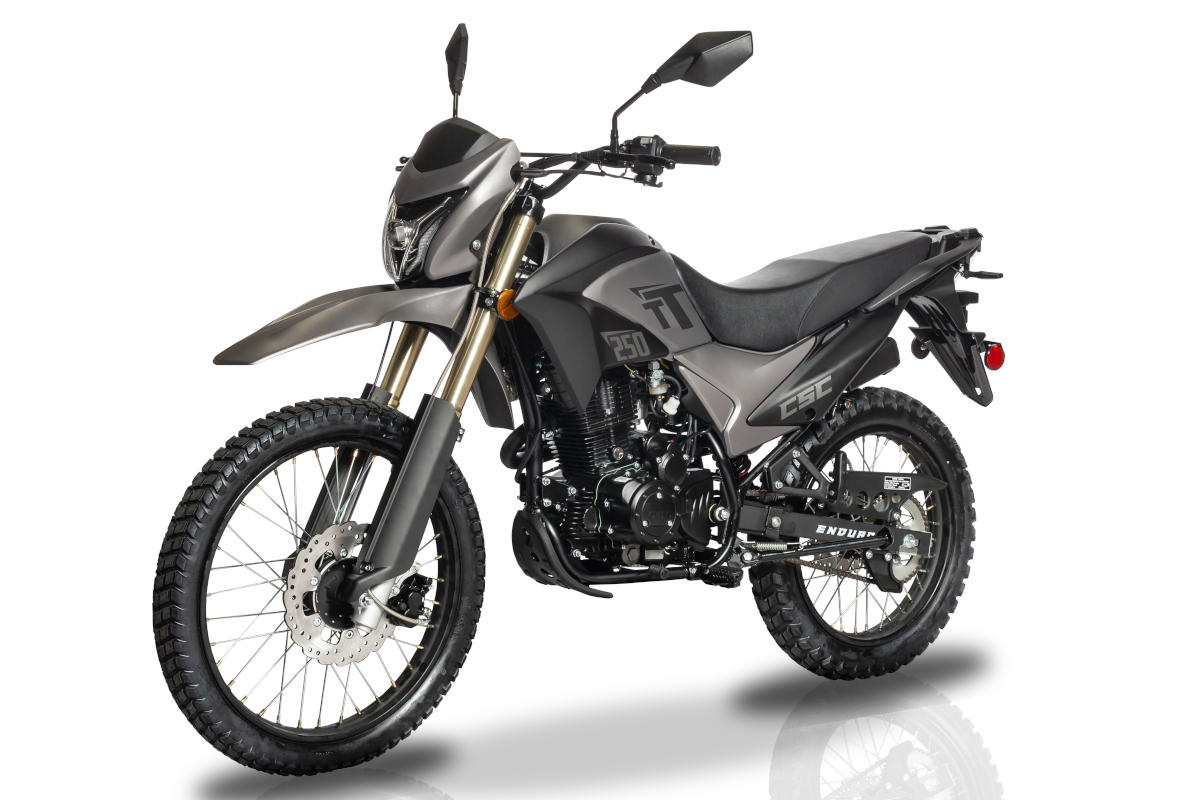 TT250 Enduro
TT250 Enduro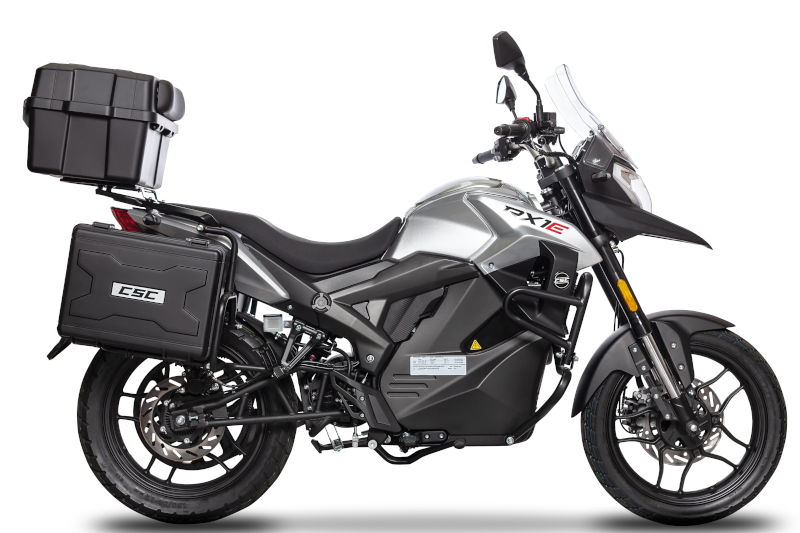 RX1E Electric Motorcycle
RX1E Electric Motorcycle